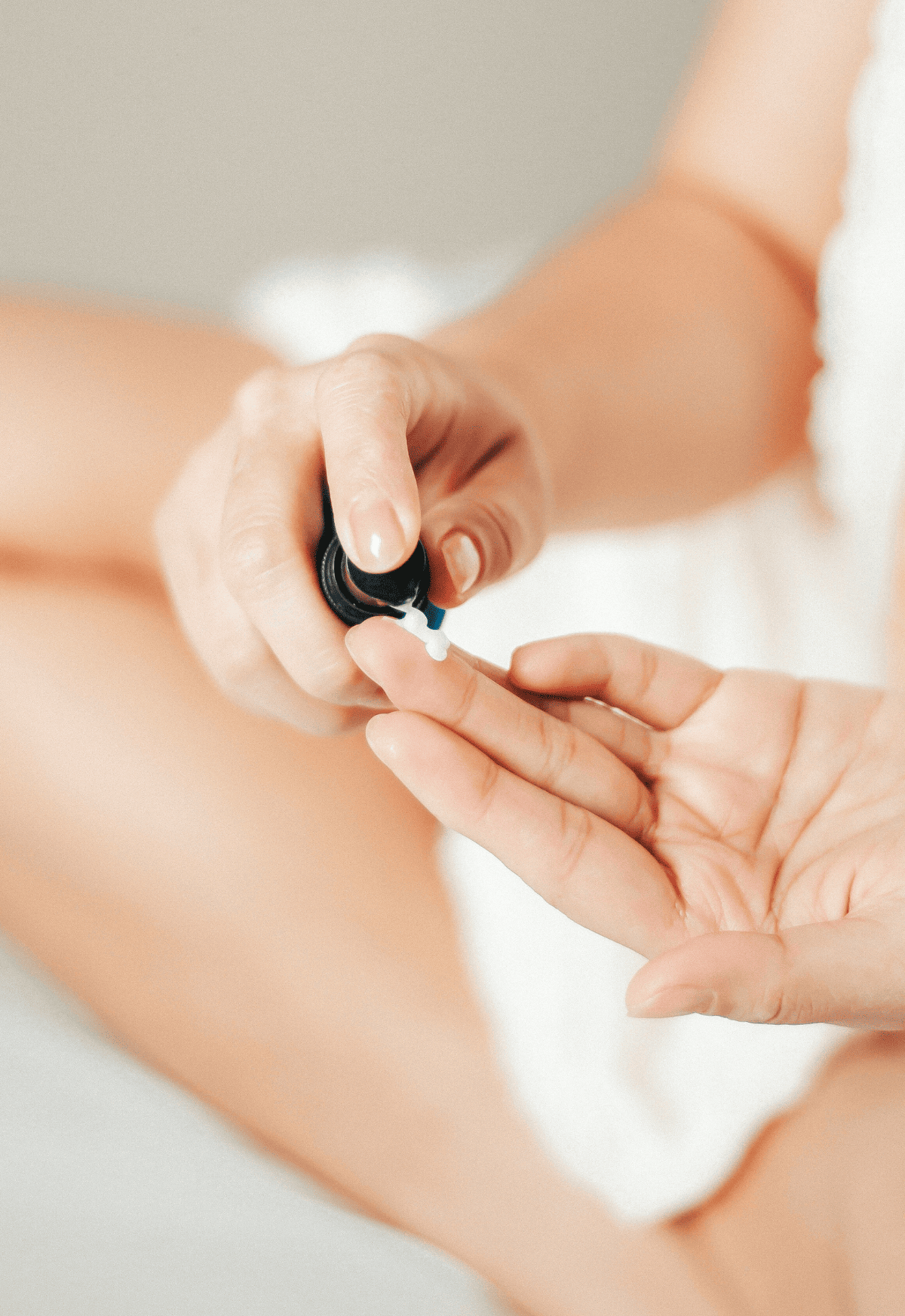
Layering and combining active ingredients may feel like alchemy. A good combination may work magic on your skin, but a bad one is a risk you want to avoid. Niacinamide and tretinoin have long been the star ingredients in my favorite products – maybe in yours, too?
Niacinamide And Tretinoin
Niacinamide regulates inflammation, minimizes pores, and boosts hydration. Tretinoin, on the other hand, targets acne and fine lines. They’re lovely when used separately, but can they work together? What if niacinamide and tretinoin could combine to solve our main skin concerns?
Here’s what we’ll cover: We’ll look at how each one works individually before diving into their combined superpowers. By understanding what makes them so special, we can unlock their full potential – all for the sake of radiant, healthy-looking skin!
Let’s dive right into the buzz surrounding niacinamide and tretinoin. These two have been gaining popularity in the world of skincare, but can they be used together? You’re about to find out.
Can I Use Niacinamide With Tretinoin?
Let’s dive right into the buzz surrounding niacinamide and tretinoin. These two have been gaining popularity in the world of skincare, but can they be used together? You’re about to find out.
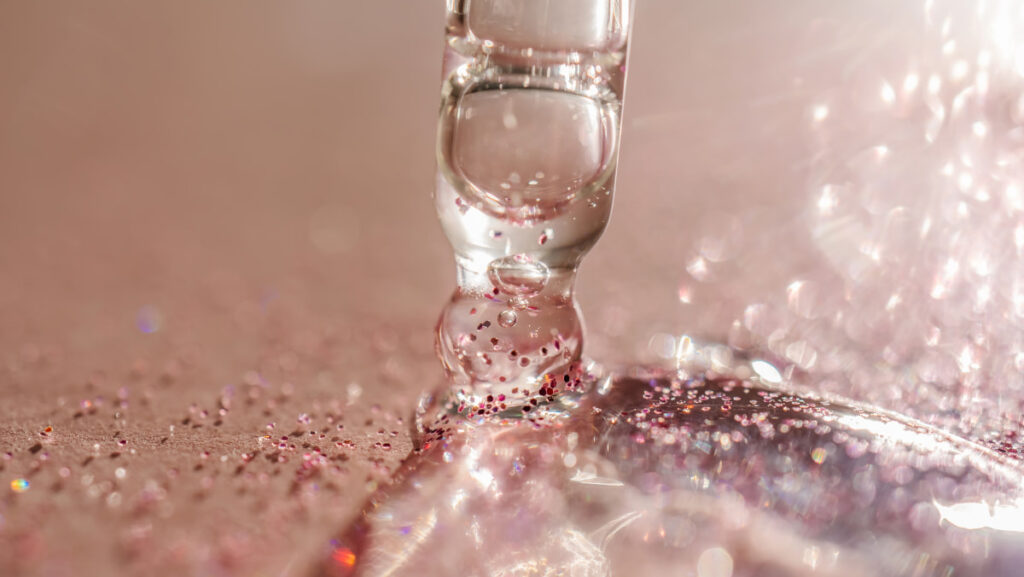
Do Tretinoin And Niacinamide Work Well Together?
It’s a yes from us! But don’t just take our word for it – science backs it up, too. Niacinamide is known for its calming effect on the skin, reducing inflammation and brightening your complexion. On the other hand, tretinoin is known for increasing cell turnover – which means fresher skin faster!
Combining these two powerhouses can lead to some pretty impressive results. We’re talking reduced acne, less visible wrinkles, and an overall more even skin tone.
Can You Use Niacinamide And Tretinoin At The Same Time?
You sure can! But here’s where it gets tricky: you’ve got to apply them in the right order (more on this later). Some people prefer using niacinamide in their morning routine while saving tretinoin for nighttime since sunlight can break down its effectiveness.
Also worth noting – if your skin tends towards sensitivity or dryness, you might want to stagger application times or even days when starting out with this combo.
What Goes First Niacinamide Or Tretinoin?
So, niacinamide or tretinoin first? If you’re planning on using both products at once, then niacinamide should go first, according to dermatologists’ recommendations. This is because it has a lower pH than tretinoin and thus prepares your skin better for what comes next.
Once you’ve applied your niacinamide, wait around 10 minutes before moving on to tretinoin.
How Long After Niacinamide Should I Apply Tretinoin?
As we just mentioned, it’s recommended to wait about 10 minutes after applying niacinamide before you layer on tretinoin. This allows the niacinamide to fully absorb into your skin and do its magic.
The takeaway here? Yes, you can use niacinamide and tretinoin together – but as with all skincare products, start slow and see how your skin responds.
Niacinamide VS Tretinoin
Let’s dive right into the world of skincare. Two superstars you’ve probably heard a lot about are niacinamide and tretinoin.
They’re hailed as game changers on their own – but what are their own benefits and differences? Let’s take a closer look at each ingredient before we move on to layering them.
What Is Niacinamide & What Are Its Benefits For Your Skin?
Niacinamide is a derivative of vitamin B3 that is also naturally produced in our bodies. It has an incredible spectrum of skin-loving properties and can accommodate almost all skin types and concerns.
It is commonly used – you’ll find it in serums, creams, toners, you name it – to improve the overall health and appearance of the skin. Niacinamide can help with hyperpigmentation, uneven skin tone, enlarged pores, fine lines, and wrinkles.
Okay, maybe I sound dramatic, but what niacinamide doesn’t do for your skin? I dug into the research[1] to showcase some of the impressive benefits of niacinamide for the skin.
- Niacinamide Protects The Skin’s Barrier: Niacinamide enhances the skin’s lipid barrier, which helps to lock in moisture and improve hydration to prevent any water loss. This can result in softer, smoother, and more supple skin.
- Niacinamide Has Anti-inflammatory Properties: Niacinamide has anti-inflammatory properties, which can help calm redness and irritation caused by conditions like acne, rosacea, or eczema.
- Niacinamide Makes You Less Oily: It can also regulate oil production[2], minimizing the appearance of pores and promoting a clearer complexion.
- Niacinamide Brightens Your Complexion: Niacinamide is known for reducing the deposition of melanin[3], the pigment responsible for dark spots and hyperpigmentation. Regular use of niacinamide can lead to a more even skin tone and a reduction in the appearance of discoloration.
- Niacinamide Can Rejuvenate The Skin: Aging skin[4] can also benefit significantly from niacinamide. Its topical application has significantly improved surface structure, effectively smoothing out wrinkles.
Gently massage niacinamide on a clean face, and when it is absorbed, you can follow up with your moisturizer and SPF.
Pro tip: Niacinamide is water soluble – to enhance its effectiveness, you can apply it on slightly moist skin.
Niacinamide is best for people who have:
- Acne-Prone Skin: Niacinamide can help reduce the production of sebum (skin oil) and has anti-inflammatory properties, making it effective for managing acne and preventing breakouts.
- Aging Skin: It can improve the appearance of fine lines, wrinkles, and dull skin by promoting collagen production and supporting the skin’s barrier function.
- Hyperpigmentation: Niacinamide can fade dark spots, reduce redness, and even out skin tone, making it useful for those with hyperpigmentation issues, including melasma and post-inflammatory hyperpigmentation (PIH).
- Sensitive Skin: People with sensitive skin can benefit from niacinamide’s soothing and anti-inflammatory properties. It can help calm redness and irritation.
- Oily Skin: Niacinamide helps regulate sebum production, which can be particularly helpful for people with oily skin, as it can reduce shine and the appearance of enlarged pores.
- Dry Skin: It can strengthen the skin’s barrier, improve moisture retention, and prevent water loss, making it a suitable choice for individuals with dry skin.
Here are some great niacinamide products you should check out:
- True Botanicals Niacinamide + Biotin Booster: Clinically proven to help reduce the look of pores, redness, and uneven complexion for your most flawless, glowy skin.
- The Inkey List Niacinamide Serum: Containing 10% Niacinamide, this naturally occurring B3 vitamin helps to effectively reduce excess oil, blemishes, and redness.
- Paula’s Choice 10% Niacinamide Booster: Visibly minimizes pore size, reduces post-breakout marks, fights multiple signs of aging, and improves skin texture.
Potential side effects: Niacinamide is generally considered safe for topical use with minimal side effects. However, make sure not to overdo it with the dosage and always perform a patch test before the first use.
What Is Tretinoin & What Are Its Benefits For Your Skin?
Tretinoin is a topical retinoid widely used in skincare for its impressive benefits. Also known as all-trans retinoic acids (ATRA) or Vitamin A1 – this ingredient has been making waves in dermatology circles for years.
Being a topical retinoid, tretinoin is a family member of retinol, which is actually a very similar skincare ingredient.
The main difference is that tretinoin is a high concentration of pure retinoic acid, whereas retinol is a form of retinoid that is converted into retinoic acid. Plus, retinol is available over-the-counter, whereas tretinoin is a prescription-only medicine.
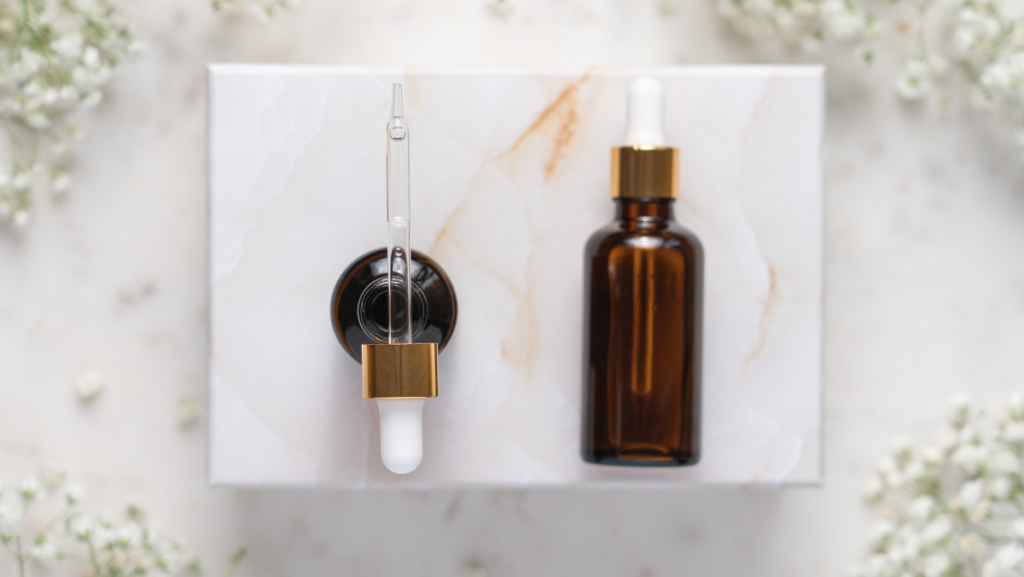
One thing tretinoin does well? Kick-starting cell turnover. Doing so helps clear out dead cells and makes way for fresh new ones! This is why many people turn to tretinoin when dealing with acne issues.
Tretinoin is primarily used to treat acne – it is actually FDA-approved as an acne treatment. It works by unclogging pores, reducing inflammation, and preventing the formation of new acne lesions.
But wait – there’s more! Beyond clearing up breakouts, regular use of tretinoin can also stimulate collagen production over time, which results in fewer fine lines and wrinkles (yay!).
Tretinoin is a powerhouse ingredient that dermatologists love – for a good reason. Much research (check out this and this) has been done to study the effects of tretinoin on the skin – I am here to spill the tea. According to these papers:
- Tretinoin Replaces Atrophic Skin: Tretinoin works to replace the thin and weakened outer layer of the skin with a thicker and healthier epidermis. This helps to restore vitality and resilience to the skin’s surface.
- Tretinoin Evens Skin Tone: Actinic keratoses are small, rough patches of skin caused by sun damage. Tretinoin targets these lesions, aiding their eradication and leading to a smoother, more refined skin texture.
- Tretinoin Brightens The Skin: Melanin, the pigment responsible for skin color, can sometimes become unevenly distributed, leading to hyperpigmentation and discoloration. Tretinoin helps to disperse melanin granules evenly, resulting in a more balanced and even skin tone.
- Tretinoin Boosts Collagen Production: Collagen is a crucial protein that provides structure and elasticity to the skin. Tretinoin stimulates the formation of new collagen in the papillary dermis, improving the skin’s firmness and reducing the appearance of wrinkles and fine lines.
- Tretinoin Promotes Cell Turnover: Tretinoin aids in the exfoliation of accumulated dead skin cells within the hair follicles, preventing clogging and breakouts and promoting a clearer complexion. It also encourages the growth of new, healthy cells. This process can lead to smoother, clearer skin with improved texture and tone.
Apply a small amount of tretinoin using your fingertips. Focus on the areas you wish to treat and begin with a conservative amount to avoid over-application.
Tretinoin is best for people who have:
- Acne-Prone Skin: Tretinoin is highly effective in treating acne, including both non-inflammatory (whiteheads and blackheads) and inflammatory (pimples and cysts) forms of acne. It works by preventing clogged pores, reducing inflammation, and promoting skin cell turnover.
- Anti-aging: Tretinoin is renowned for its anti-aging benefits. It can reduce the appearance of fine lines, wrinkles, and photodamage (damage from sun exposure) by stimulating collagen production and increasing skin cell turnover. It may also improve skin texture and tone.
- Sun-Damaged Skin: Tretinoin can help reverse some of the effects of sun damage, including age spots, uneven pigmentation, and rough skin texture.
- Hyperpigmentation: It can be effective in treating certain types of hyperpigmentation, such as melasma, when used under the guidance of a healthcare professional.
- Acne Scars: Tretinoin may help improve the appearance of certain types of scars, especially acne scars, by promoting collagen production and encouraging skin cell turnover.
- Keratosis Pilaris: Tretinoin can be used to treat keratosis pilaris, a common skin condition characterized by small, rough bumps on the skin, usually on the arms and thighs.
Potential side effects of tretinoin: Tretinoin, a common acne treatment, can have some side effects. They might include dryness, redness, flaking or peeling, and mild irritation when you start using it. Always use broad-spectrum sunscreen and moisturizer to help.
What Are The Differences Between Tretinoin And Niacinamide?
Now we’ve got a sense of what niacinamide and tretinoin can do; let’s pit them against each other.
While both have their merits, they shine in different areas. Niacinamide is more about hydration and calming inflammation, while tretinoin excels at speeding up cell turnover.
Also worth considering is how your skin reacts to these ingredients. Tretinoin can be quite potent, and some people might experience irritation or dryness when first using it – so it’s important to ease into this one.
Niacinamide, on the other hand, tends to be well-tolerated by most skin types, making it a safer bet for those with sensitive skin!
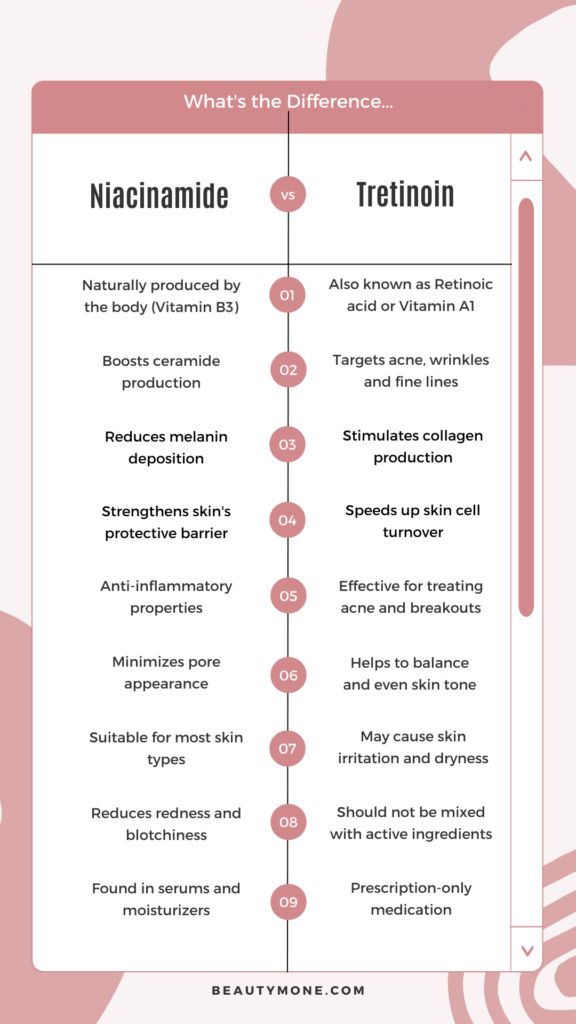
How To Layer Niacinamide And Tretinoin Properly
Now that you have mastered the art of both ingredients, it is time to answer your burning question. Can you use niacinamide and tretinoin together?
Yes, you can! But here is the catch. You can use them together, but you should never mix them!
Tretinoin is a very potent ingredient and can cause skin irritation, which could derail your skincare routine.
Therefore, you should be really careful when combining niacinamide with tretinoin. Even though niacinamide is remarkably mild, each skin reacts differently to active ingredient combinations.
Find A Product That Contains Both
While there are not a myriad of products containing niacinamide and tretinoin, finding one might be the best way to enjoy the benefits of this combo. However, you may have to find a product like this through a dermatologist (you know, tretinoin and being a prescription).
The formulas will guarantee the stability and compatibility of the products, as well as minimize potential skin discomfort.
However, you should know that using a pre-made formula might not have as potent effects as using niacinamide and tretinoin separately. But it sure is convenient!
Use Niacinamide And Tretinoin At Different Times Of The Day
You can still reap the benefits of niacinamide and tretinoin if you use them at separate times of the day. As I mentioned above, applying tretinoin at night allows it to work on your skin without the risk of sun sensitivity.
At the same time, your skin is happiest with niacinamide during the day because niacinamide provides added hydration and skin-soothing effects.
Having one as part of your daytime routine and the other as part of your night-time routine is probably the best way to go with these ingredients.
Use Them On Alternate Nights
Swapping between niacinamide and tretinoin for your night-time routine is great for my friends with sensitive skin.
Tretinoin is very potent and can cause redness, itching, or peeling. Therefore, going over your sensitive skin with tretinoin every day might not be your best shot. If you still notice skin irritation, turn down your frequency even more (every two days or less, if needed).
On the other hand, niacinamide is mild and has a soothing and moisturizing effect. It can rejuvenate your skin and prep it for the next dose of tretinoin.
Layer Them Very Carefully
I would not advise you to use one ingredient on top of the other, especially if you have sensitive or dry skin. In fact, it is advisable to steer clear from applying any topical medication for one hour after tretinoin.
However, you can still layer niacinamide and tretinoin, but there are several factors and safety precautions to consider.
To achieve efficient layering, it’s essential to think about the consistency of the products. Tretinoin typically comes in thick cream or gel forms, while niacinamide can be found in various consistencies such as lotions, cleansers, toners, and serums.
Generally, we prefer to start our beauty routine with a thinner/ lighter consistency and then finish off with thicker products.
That is why lighter consistencies tend to dissipate better into our skin, while thicker ones tend to lie on top of it. Therefore, you should go for niacinamide in a thinner form, like a toner or serum.
This is how to layer niacinamide and tretinoin for the best results and no irritation:
- Wash your face with a mild cleanser and gently pat it dry.
- Apply the niacinamide serum all over your face and allow it to absorb fully into your skin.
- Wait for at least 30 minutes before applying tretinoin.
- Apply the tretinoin cream evenly across your face and give it enough time to absorb into your skin.
- Wait again for at least 20 minutes before applying your regular moisturizer.
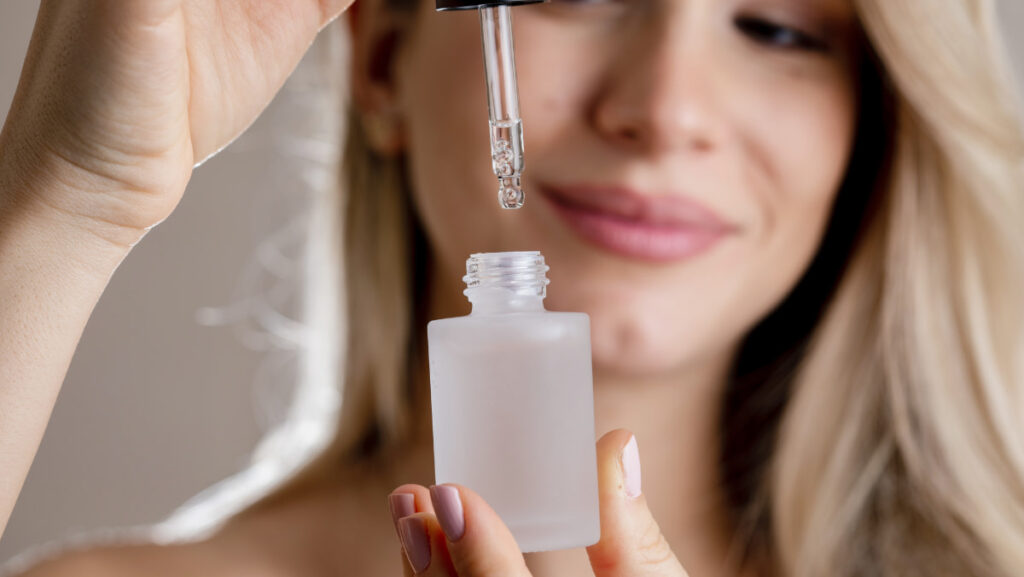
Conclusion On Niacinamide And Tretinoin: Your New Best Friends
Both niacinamide and tretinoin offer unique skincare benefits, with niacinamide serving as a versatile antioxidant for brightening and reducing inflammation, while tretinoin excels in anti-aging by stimulating collagen production and promoting cell turnover.
Combining them can be effective, but individual reactions vary, so conduct patch tests. Although generally safe, both may cause irritation or dryness. Always prioritize your skin’s signals, and if something feels amiss, discontinue use.

Thank you so much Simone for th ye detailed explanation for the ones who is writing from a long term acen and acne blemishes .
This guide is very helpful and would like to follow it.